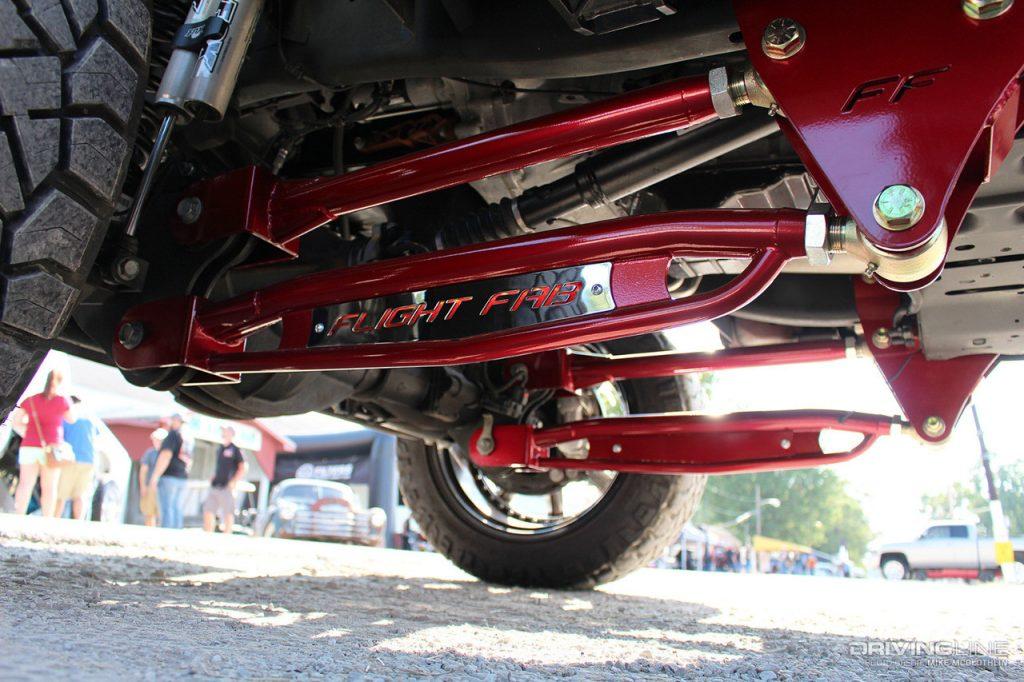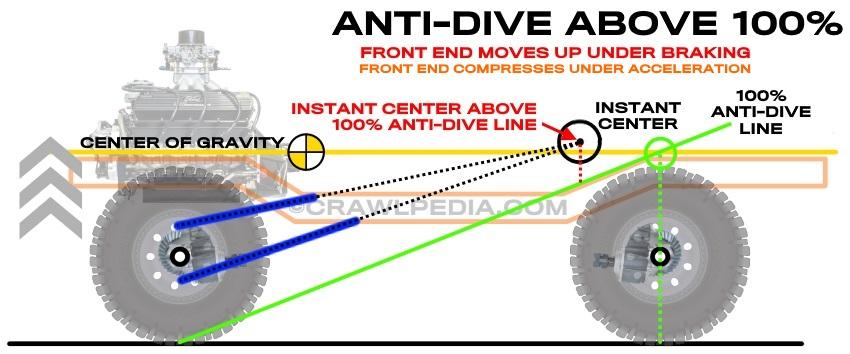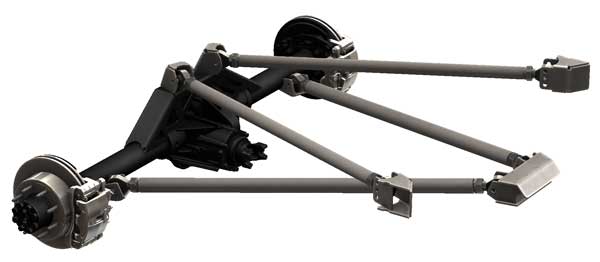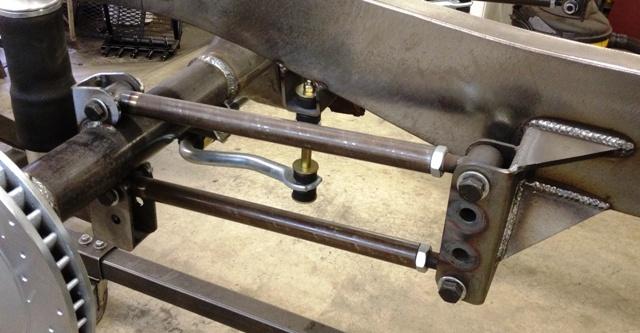Cornering is a crucial aspect of vehicle performance, and the suspension system plays an essential role in how a vehicle handles when cornering. One type of suspension system that has been gaining popularity in recent years is the four-link suspension. This system is used in many vehicles, from race cars to family sedans. But is a four-link suspension perfect for cornering?
Table of Contents
READ: The Best LS Standalone Harness
What is a 4 Link Suspension?

We must first understand what a four-link suspension is and how it works to answer this question. A four-link suspension is an independent suspension system that uses four links to connect the wheels to the chassis.
The links are attached to the chassis at two points, and the wheels are attached to the links at two points, allowing the wheels to move independently. The four links help to absorb bumps and improve handling by reducing the amount of body roll when cornering.
How A 4 Link Suspension Can Benefit Cornering

Now that we understand a four-link suspension let’s look at how it can benefit cornering. The most significant benefit of this type of suspension system is that it can reduce body roll when cornering. This is because the four links allow the wheels to move independently, which helps keep the vehicle's body more level when cornering. This can improve cornering performance by reducing the amount of grip lost due to body roll.
Another benefit of the four-link suspension is that it can help reduce understeer. Understeer is when the vehicle does not turn as much as the driver expects, which can lead to dangerous situations. The four-link suspension helps reduce understeer by allowing the wheels to move independently, which helps reduce the amount of grip lost when cornering.
The four-link suspension can also help improve the vehicle's stability when cornering. Because the wheels can move independently of each other, the car will be able to maintain its stability better when cornering. This can help improve the vehicle's handling and reduce the risk of losing control when cornering.
Finally, a four-link suspension can also help to reduce tire wear. This is because the links help to absorb bumps, which can reduce the amount of strain that is placed on the tires. This can help extend the tires' life and reduce the need for frequent tire replacements.
Triangulated 4 Link Suspension

The triangulated 4 link suspension is the most common type of 4 link suspension system. It is designed with two long links connecting the frame to the suspension arms at the front and rear of the vehicle and two shorter links connecting the arms in the middle.
This design creates a triangular shape, with the two long links forming the two sides of the triangle and the two shorter links forming the base. This design provides a stronger connection between the frame and the suspension arms, making it better suited for vehicles with more aggressive off-road driving.
Advantages of Triangulated 4 Link Suspensions
The most significant advantage of the triangulated 4 link suspension is its strength. The triangular shape of the links provides a much stronger connection between the frame and the suspension arms, preventing them from flexing or bending under extreme off-road conditions. This makes the vehicle more stable and better able to handle the bumps and jumps of off-road terrain.
Another advantage of the triangulated 4 link suspension is its flexibility. The triangular shape of the links allows the suspension to move independently of the frame, providing a smoother ride and more responsive handling. This makes the vehicle more comfortable and easier to control, even on the most challenging off-road courses.
Lastly, the triangulated 4 link suspension is more compact than the parallel 4 link suspension, making it easier to install in vehicles with limited space.
Disadvantages of Triangulated 4 Link Suspensions
The main disadvantage of the triangulated 4 link suspension is its complexity. The triangular shape of the links requires more intricate design and installation than the parallel 4 link suspension, making it more difficult to install and maintain. This can be incredibly challenging for inexperienced users who may not be familiar with the setup and installation process.
Another disadvantage of the triangulated 4 link suspension is its cost. The complex design of the links makes them more expensive than the parallel 4 link suspension, so the overall cost of the system may be higher.
Lastly, the triangulated 4 link suspension is not as adjustable as the parallel 4 link suspension. The shorter links do not provide as much flexibility to change the height or angle of the rest, making it more difficult to customize the ride and handling of the vehicle.
READ: Why Can’t You Put An Alternator On An Electric Car?
Parallel 4 Link Suspension

The parallel 4 link suspension is the other type of 4 link suspension system. It is designed with two long links connecting the frame to the suspension arms at the front and rear of the vehicle and two shorter links connecting the components in the middle.
This design creates a rectangular shape, with the two long links forming the sides of the rectangle and the two shorter links forming the top and bottom. This design provides more flexibility than the triangulated 4 link suspension, making it better suited for vehicles with more moderate off-road driving.
Advantages of Parallel 4 Link Suspensions
The most significant advantage of the parallel 4 link suspension is its adjustability. The rectangular shape of the links allows for a broader range of adjustments, making it easier to customize the ride and handling of the vehicle. This makes the car more comfortable and easier to control on or off-road.
Another advantage of the parallel 4 link suspension is its simplicity. The rectangular shape of the links requires less intricate design and installation than the triangulated 4 link suspension, making it easier to install and maintain. This makes it more suitable for inexperienced users who may not be familiar with the setup and installation process.
Lastly, the parallel 4 link suspension is more affordable than the triangulated 4 link suspension, so the overall cost of the system may be lower.
Disadvantages of Parallel 4 Link Suspensions
The main disadvantage of the parallel 4 link suspension is its lack of strength. The rectangular shape of the links does not provide as much power as the triangular shape of the triangulated 4 link suspension, making it less suitable for vehicles with more aggressive off-road driving.
Another disadvantage of the parallel 4 link suspension is its size. The rectangular shape of the links makes the system more prominent than the triangulated 4 link suspension, making it more challenging to install in vehicles with limited space.
Lastly, the parallel 4 link suspension is not as flexible as the triangulated 4 link suspension. The shorter links do not provide as much freedom of movement, making it more difficult to achieve a comfortable and responsive ride.
READ: What Does a 4 Link Suspension Do?
Is 4 Link Suspension Good for Cornering? - Conclusion
Overall, a four-link suspension can be beneficial for cornering. It can reduce body roll, reduce understeer, improve stability, and reduce tire wear. It is an excellent choice for performance vehicles that need to handle well when cornering.
However, it is essential to note that the four-link suspension is unsuitable for all vehicles. It is best suited for cars that are designed to be performance-oriented and have the necessary parts and components to make the most of the four-link suspension.
